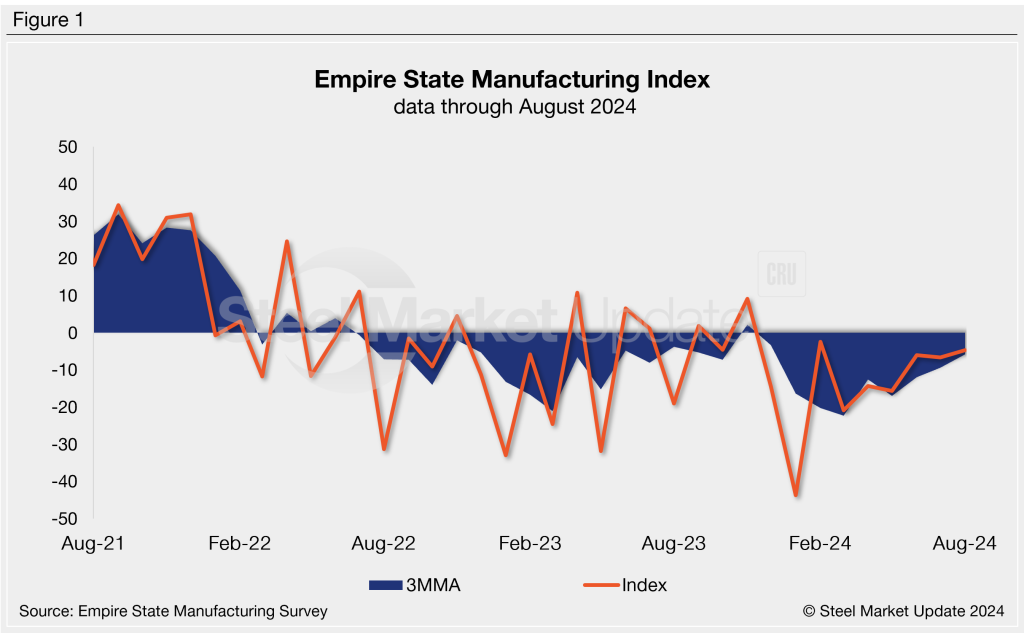Economy

Manufacturing activity in New York state still down
Written by David Schollaert
August 15, 2024
New York state’s manufacturing activity improved in August but remained in contraction territory, according to the latest Empire State Manufacturing Survey from the Federal Reserve Bank of New York.
The Survey’s General Business Conditions Index rose by 1.9 points this month to a reading of -4.7. This marks the ninth consecutive month of negative readings.
Last year, the index peaked at 10.8 in June and has only indicated improving business conditions in nine of the last 32 months.
Manufacturing activity slipped in August, driven by modest declines in new orders and weak labor conditions due to “a small decline in employment and a sharp drop in hours worked,” commented New York Fed economic research advisor Richard Deitz. “Firms continued to be somewhat optimistic that conditions would improve in the months ahead.”
The new orders index fell 7.3 points this month after staying flat for the previous two months, while the inventories index indicated lower stocks for a second straight month. Firms remain “fairly” optimistic about future business conditions, as 45% of respondents expect improvement over the next six months. The full release is available here.
On a three-month moving average basis (3MMA), the index rose in August to its highest reading of the year, -5.77 (see Figure 1). Recall that in March, the Index reached -22.33, the fourth-lowest 3MMA figure within our 15-year data history, which was only higher than the months of April, May, and June 2020.

An interactive history of the Empire State Manufacturing Index is available here on our website.

David Schollaert
Read more from David SchollaertLatest in Economy

Architecture billings continue to slide in March
Architecture firms said billings continued to decline in March, according to the latest Architecture Billings Index (ABI) released by the American Institute of Architects (AIA) and Deltek.

Beige Book shows concerns about trade policy
Manufacturing was mixed, but two-thirds of districts said activity was little changed or had declined.

New York state manufacturing index drops again in April
Firms were pessimistic, with the future general business conditions index falling to its second lowest reading in the more than 20-year history of the survey

Construction adds 13,000 jobs in March
The construction sector added 13,000 jobs, seasonally adjusted, in March, but tariffs could undermine the industry.

Supply chains, end-users brace for impact from tariffs
Supply chains are working through what the tariffs mean for them
